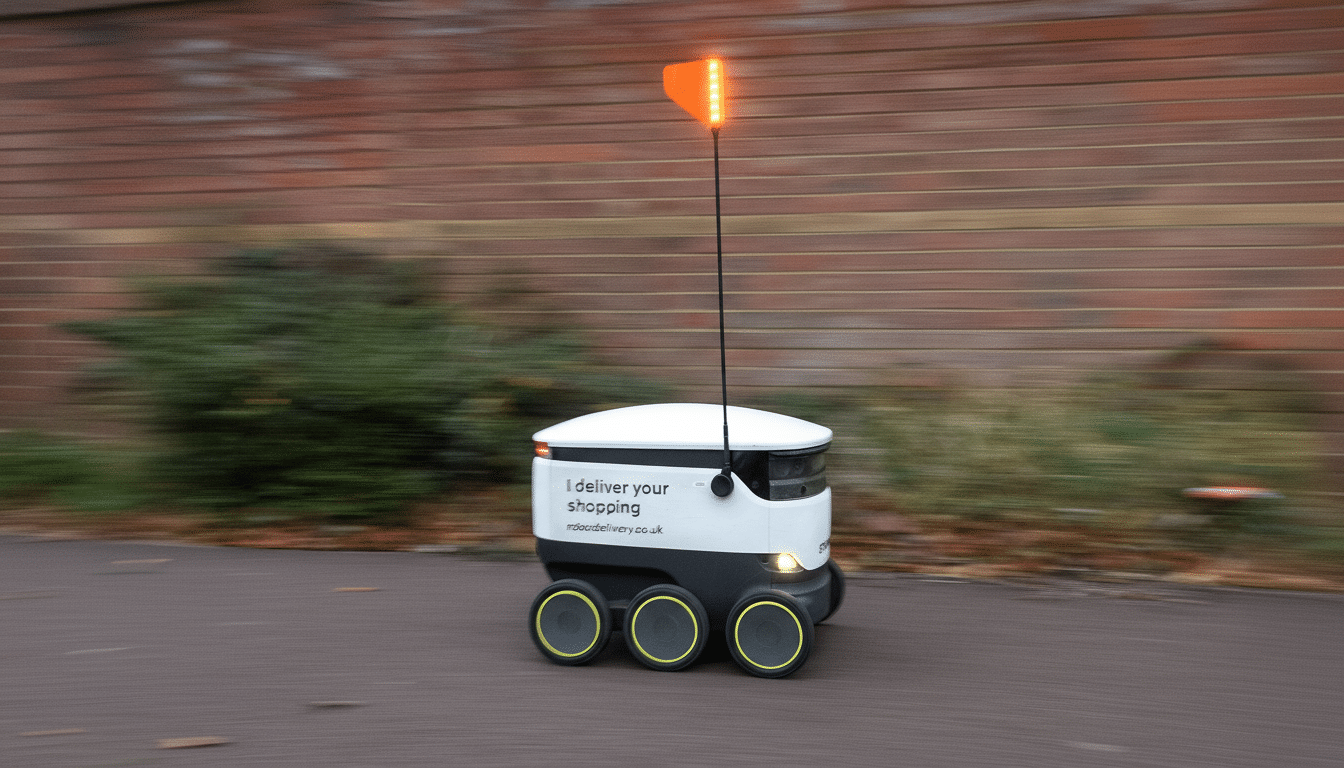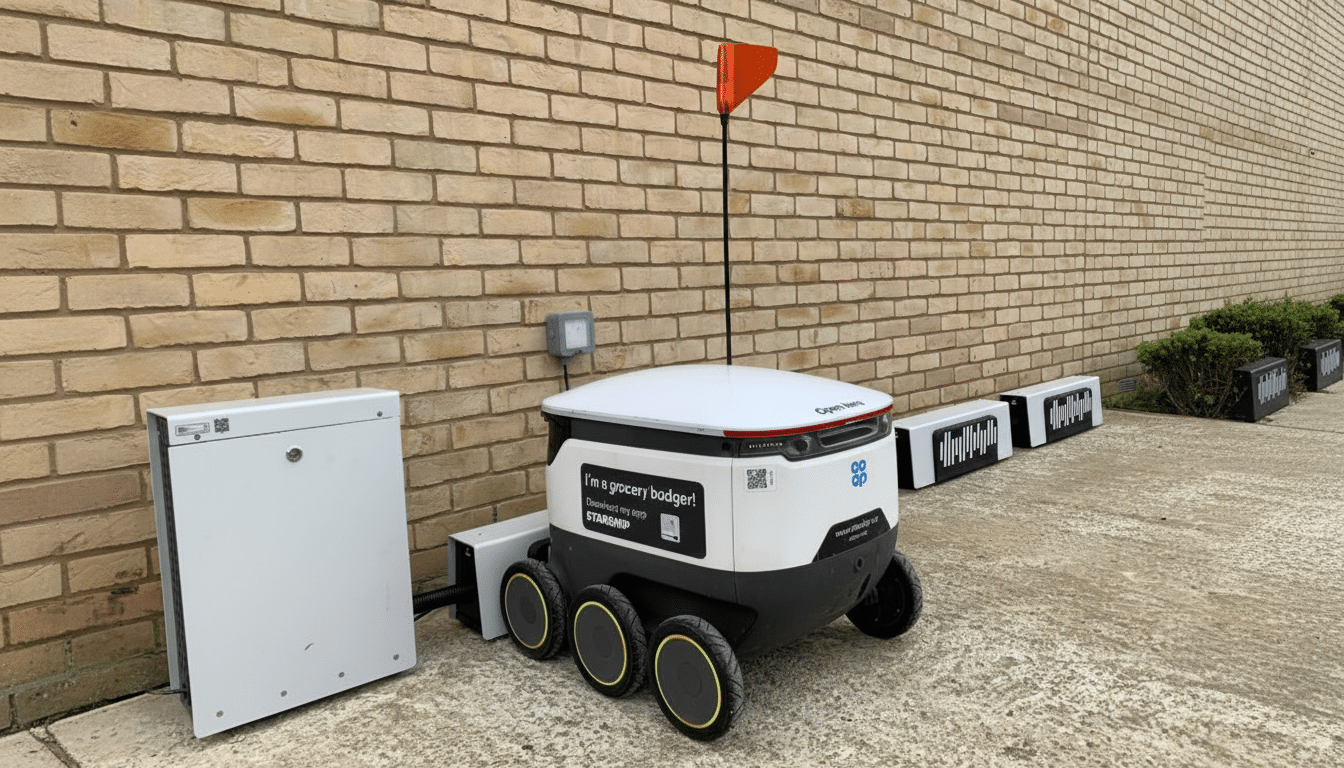For years now, the gig economy has served as a pressure valve for household budgets and career pivots. Now, artificial intelligence is rapidly pressing on that valve, from driverless cars to delivery robots to generative tools that spit out anything we need. The issue isn’t whether AI is coming for gig work — it’s how fast, where first and who ends up getting left behind in the shift.
Autonomy Hits The Curbside Economy Of Deliveries
Robotaxis and sidewalk bots are going from pilot project to presence in a few U.S. locales. Waymo is scaling up paid rides in Phoenix and areas of California, while small delivery robots made by companies like Starship and Serve Robotics have completed millions of trips on campuses and select urban corridors. Amazon-owned Zoox and Nuro are experimenting with custom vehicles that focus directly on last‑mile logistics.
- Autonomy Hits The Curbside Economy Of Deliveries
- Online Gigs Pinched By Generative AI Tools
- Algorithmic Management Tightens The Screws
- What Gets Automated First Across Gig Platforms
- Timelines And Tradeoffs For Gig Work And AI
- A New Social Contract For Gig Work In An AI Era
- The Bottom Line On AI’s Impact On Gig Work

The outlook is uneven. Following a high-profile safety incident, Cruise suspended operations across the nation, showing how regulators like the California DMV and national safety agencies will be calling the shots. Nonetheless, autonomy is literally nibbling around the edges of trips in which routes are repeatable, traffic patterns predictable and speeds low — just the sort of short hops underpinning much rideshare and courier revenue.
It’s the economics, stupid. If an autonomous delivery can be priced below what it costs to deploy a human courier, fully loaded, volumes clearly will shift. Some industry forecasts predict significant reductions in cost per mile as hardware scales and supervision is centralized. Even if the timelines are longer than expected, a substantial slice of high-density, short-distance work is accessible to AI within the next decade.
Online Gigs Pinched By Generative AI Tools
Digitally speaking, generative AI is already disrupting marketplaces such as Upwork and Fiverr. And copywriting, translation, image production and simple video edits — the lifeblood for many freelancers — are challenged by an onslaught of automation and price pressure. Platforms report soaring demand for AI services while routine content jobs become commoditized, and more clients request “AI-assisted” work and post‑editing as opposed to creating from scratch.
Not all categories are shrinking. Data labeling, model fine‑tuning, prompt engineering and AI quality assurance have all emerged rapidly, and the few skilled freelancers are now pairing automation with domain expertise to keep up their rates. The center of gravity, though, is moving toward fewer higher‑skill tasks in the middle and a long tail of lower‑paid faster-turnaround jobs — which makes for an uncomfortable barbell for anyone who relies on gig income.
Algorithmic Management Tightens The Screws
And even when AI does not replace workers, it increasingly supervises them. Today, on large apps, routing, surge pricing, fraud detection and performance scoring have become algorithmic core functions. Studies conducted by labor researchers and the International Labour Organization have shown that opaque decision systems can depress pay, raise the risk of cancellation and shift costs to workers when they are not working.
This matters because for many families, gig work is not a side bet — it’s a buffer. A sizable share of adults who’ve earned money on these platforms say that this type of work is important for paying the bills. When optimization driven by AI cuts minutes off a route or pushes acceptance thresholds, the effect is felt directly in rent and groceries, not only in productivity charts somewhere on the Web.
What Gets Automated First Across Gig Platforms
Three patterns stand out.

- First, tasks that are repeatable, with narrow operating domains — campus deliveries, late‑night hotel hallways, fixed-route shuttles — are automating the fastest.
- Second, hybrid models of one long-range supervisor for many vehicle monitors are expanding coverage without the need for full autonomy.
- Third, generative tools are most effective in digital marketplaces, applying to tasks with clear instructions and plentiful training data.
Meanwhile, high‑touch, variable or regulation‑heavy ones — childcare, home repair, in‑home care and event staffing — are more resilient. In ride‑hailing, complex urban driving and edge cases still present difficult challenges for systems; in content, strategy, original reporting and a nuanced brand voice continue to have value. But the floor on entry-level jobs is shifting.
Timelines And Tradeoffs For Gig Work And AI
McKinsey estimates generative AI could speed the automation of as much as 30 percent of hours in the U.S. economy by 2030.
Goldman Sachs is forecasting significant global exposure to the AI job market. The near‑term picture is more partial for gig platforms: clusters of full automation, more generalized algorithmic surveillance and steady replacement of human minutes with machine ones.
The tradeoffs are real. Shoppers and riders could enjoy cheaper, faster deliveries or rides. Cities might get slashed emissions and safer streets — if systems are employed in a responsible way. But without guardrails, workers are giving up one of the last instant income streams at a time expenses and job searches have stretched longer.
A New Social Contract For Gig Work In An AI Era
Policy is beginning to follow. New York City set a floor for wages of app‑based food deliverers. From Seattle to London, cities are grappling with portable benefits and demands for transparency into algorithmic management. Labor groups are calling for more transparency so workers can understand how ratings, tips and deactivations work.
Platforms also have choices. They can frame AI as augmentation — safer routing, language assistance, automated mileage logs and freelance co-pilots along with commitments to wage floors and transparent appeals processes. Or they can race to become more automated, and as they do, risk dissolving the flexible labor pool that built their networks.
The Bottom Line On AI’s Impact On Gig Work
AI is about to take on the gig economy, but it’s not going to be in a big bang. Anticipate a gradual erosion of routine shopping and chores, more restrictive algorithms for everything else, and a premium on sophisticated human work that is as flexible, trustworthy and ‘human’ as possible. For workers, resilience will depend on how readily higher‑skill services can be combined with AI‑enhanced productivity. The question marks a test of whether, for cities and platforms alike, innovation increases opportunity — or quietly erodes a critical safety net.

